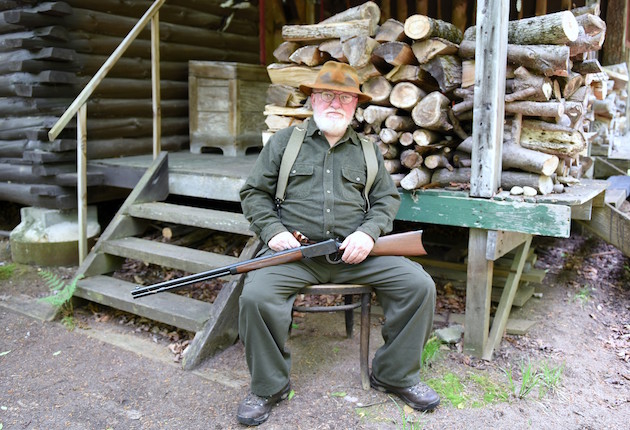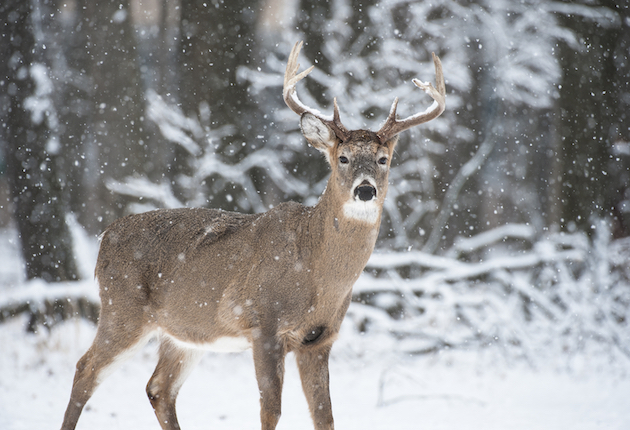I found him early in the afternoon as I climbed towards a ridge where I thought there might be beechnuts. On the hogs-back, sprawled into the leaves like he went down mid-step, was a dead deer. A buck.
His gray muzzle gave way to an old, thin rack—an eight pointer. There were scars on his forehead and neck. None of the critters that would come to feed on him had found him yet. I sat down beside him, running my hands over his chest and head. I was sad.
As I spoke out loud, telling him how much I had enjoyed all of these years chasing after deer such as him, I began to cry. This was an allegory of my own life that I had almost missed. You see, I wasn’t supposed to be hunting any more this deep into the mountains. That wasn’t the plan.
Four months into my retirement in 2011, I had what has become known as an “episode” while unloading firewood at a hunting camp. Two buddies found me unresponsive and drove me to the ER. It turned out not to be life threatening, but it got my attention nonetheless. I had to except that from now on, at any time, my life as I had assumed it would continue did not need to, did not have to exist in any idea that I had fashioned for myself.
Of course, that realization had existed for much of my life already, just like it has in yours. We are often closer to death or serious harm than we realize or expect. But now I understood that those pursuits like deer hunting, the ones that had shaped and driven my life for 50 years, were in danger of going away from me. My days afield could end.
I began to see it as inevitable. I began to accept it. So how would I say goodbye? How would I let go?
I sort of knew, if only in the back of my head. I thought that I would go out writing about hunting, brook trout, wilderness canoeing, and backpacking. All of these were closely related to my life and gear and health. I played time the same way on all of these.
What I needed was a plan, one that would allow me to move forward—to move past these difficult transitions. A plan would let me ease on out. I sat down and made a list of locations that I wanted to return to a final time.

The author and his Winchester .30-30.
One of them was the cherished hunting ground of my youth. In the Adirondacks, where I have hunted since I was 16, we hunt the land as much as the deer. This is because there are so few bucks. A common view is that you will only see one buck a year—if that. If you want to let that one go because the rack is too small or the deer too young, go ahead . . . but you will not be tasting venison that season. And the guy next to you will kill it anyway.
Instead, we seek out places of beauty; places we hunted with our fathers, grandpas, brothers, and other men who became our lifelong friends. By returning to such places, we cement those memories into our heads for the rocking chair days ahead. The land becomes part of the fabric of the hunting craft. It is akin to wearing an old wool coat.
I started doing that, too. Went back to a Winchester .30-30, the first rifle I killed a deer with. Went back to open sights. Left the day pack at home.
But my plan began to unravel right off. For one thing, I got into better shape than I had expected. I found myself stronger; began taking myself deeper into the mountains. After visiting those places that I wanted, I went back looking for new places to wander in the big woods—one of the reasons I love the Adirondacks so much. There is something real and magical about hunting over lands where you do not find any evidence of others. That allure, I realized, is what kept me hunting during the thin years in between bucks. Alone always helps.
I looked into fall. The snows had come and gone and we were left with this cold spell. Beech leaves were still on the saplings, fluttering the wind. The sky was all blue, that brilliant hue that often accompanies the hunter.
And then I found him.
Around me, life was being sharply defined, including my own. There was no thought of taking his rack with me. If I did, it meant that my day was over. What is the purpose of coveting such a rack? For the story of it? A larger meaning left it in the woods where the mice could eat it. A larger meaning could be had if I learned how to use this picture of effort and purpose, transposing it back onto my life.
I had been wrong to say goodbye to hunting. Deer had in many ways created who I was and brought me here, on this day, into these woods, under this sky. Of course, that buck could not have known that he would die on his way to the ridge, looking for beechnuts and a sunny slope to rest on, one where the wind could help him scent me or the coyotes. That buck remained faithful to his own existence by hunting his last day. He went as far as he could, taking his life along with him by not planning it away, by not giving up.
That deer was not my death, but it could have been. What I needed to do was continue to use hunting to fashion what was left of my life, not abandon it to farewell.


Mr Keck, you hit on the very emotions that go through my mind every time I am fortunate enough to take a game animal or catch a fish. I often wonder if each one will be my last. A life in the outdoors leads one to many unexpected things, and fortunately for myself, a deep appreciation for my surroundings is one of my most treasured posessions. Though I am not a wealthy man, I have exhausted my “bucket list” of hunts, and only wish that there were more, rather than less in front of me than behind. What I do wish to do with the rest of my hunting seasons is to spend more time in places where I don’t hear passing traffic, or any other sounds of civilization, even if it means an empty freezer for that season. I might even consider taking out my stepdad’s old 30/30 if the sights weren’t so blurry.
Having just returned from Africa, one part of the hunt was the most exhausting and emotional hunting experience I have ever had. My cardiologist told me “Bill, you were Crazy to go on that hunt at your age “. Maybe, but you should never give up what you love doing. What would be left to live for.
Life is like that…